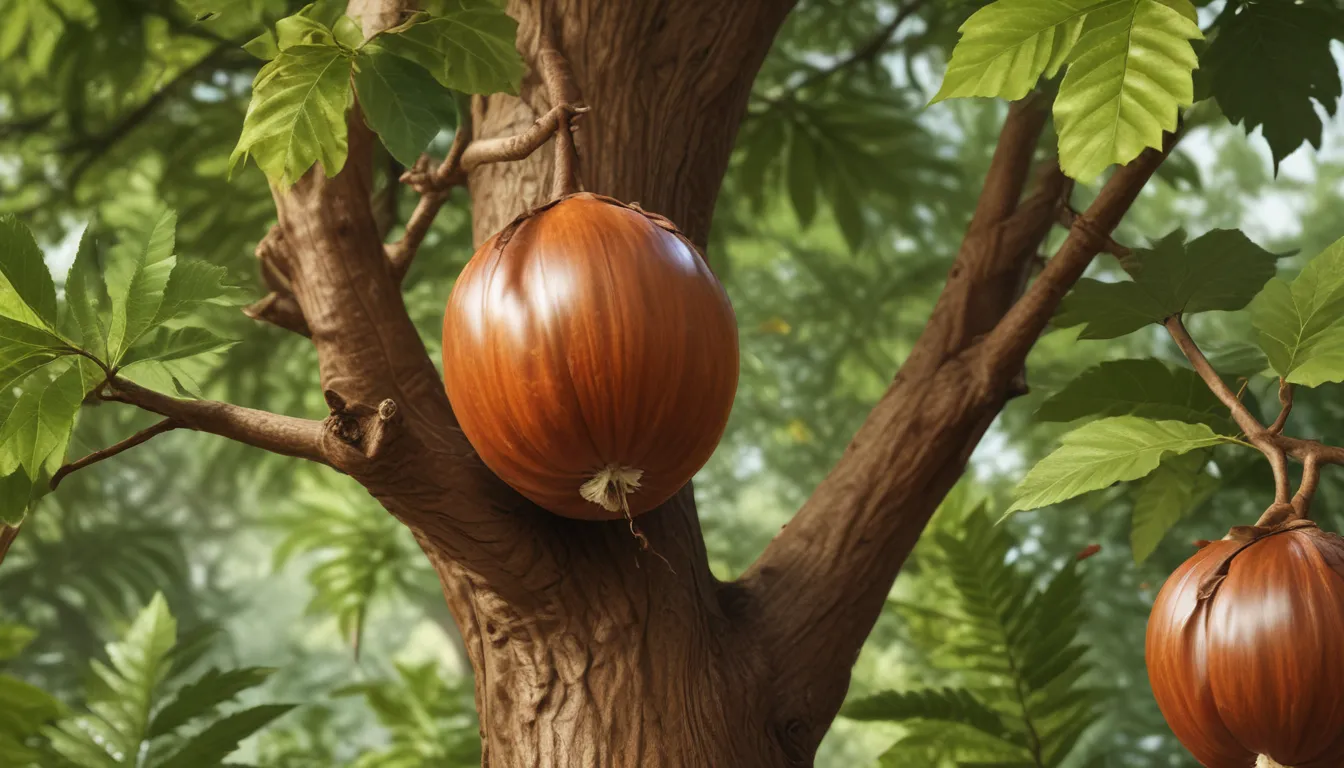The pictures we use in our articles might not show exactly what the words say. We choose these pictures to make you interested in reading more. The pictures work together with the words but don’t take their place. The words still tell you the important facts.
Welcome to the wonderful world of Castanea, where iconic chestnut trees reign supreme. These fascinating plants have captured the attention of people for centuries, not only for their delicious nuts but also for their cultural and ecological significance. In this article, we will delve into the incredible universe of Castanea and explore nine captivating facts about these remarkable trees. From their ancient origins to their valuable environmental contributions, we will uncover the secrets and wonders that make Castanea such a captivating genus. So, if you're ready to embark on a journey of discovery and learn more about these fascinating trees, let's dive right in!
Castanea: A Closer Look
Castanea, commonly known as chestnuts, is a genus of flowering plants that belong to the family Fagaceae. These deciduous trees are native to the Northern Hemisphere and are known for their iconic chestnuts.
Ancient Origins of Chestnuts
The cultivation of chestnuts dates back thousands of years, with evidence of their consumption found in ancient civilizations such as the Greeks and Romans. These trees have a rich history that is deeply intertwined with human culture and traditions.
Nutritious and Delicious Chestnuts
One of the most well-known characteristics of castanea plants is their ability to produce edible nuts, commonly known as chestnuts. These nuts are not only delicious but also packed with nutritional benefits. They are a good source of fiber, vitamins, and minerals, making them a healthy addition to any diet.
- Chestnuts can be enjoyed in various ways, including roasted, boiled, or cooked into soups, stews, and desserts. They can also be used in baking or enjoyed as a healthy snack.
Longevity of Castanea Plants
Castanea plants have an impressive lifespan, with some species living for several hundred years. Their longevity makes them significant contributors to forest ecosystems, where they play a vital role in maintaining ecological balance.
Valuable Chestnut Wood
The wood obtained from castanea plants, known as chestnut wood, is highly valued for its durability, resistance to decay, and attractive grain patterns. It is commonly used in furniture making, flooring, and construction, making it a versatile and valuable resource.
Environmental Contributions of Castanea Plants
Castanea plants play a crucial role in maintaining ecological balance. They help prevent soil erosion, provide shade and shelter for wildlife, and contribute to the overall health and biodiversity of forests. These trees are truly environmental champions, making a positive impact on their surroundings.
Cultural Significance of Chestnuts
Castanea plants have significant cultural importance in many regions around the world. They are associated with traditional festivals, folklore, and culinary traditions, making them an integral part of local cultural heritage. Their presence in various cultural practices and celebrations highlights their enduring significance in human societies.
Medicinal Uses of Castanea Plants
Various parts of castanea plants, such as the leaves and bark, have been used in traditional medicine to treat ailments such as diarrhea, coughs, and skin conditions. These plants have a long history of medicinal use, showcasing their diverse and beneficial properties.
FAQs: Your Questions Answered
-
What are the different varieties of Castanea? - There are several varieties of Castanea, including European chestnut, American chestnut, and Chinese chestnut, each with its own unique characteristics and uses.
-
How do I incorporate chestnuts into my diet? - Chestnuts can be enjoyed in various ways, from roasting to baking and snacking. They are versatile and can be used in a wide range of dishes, adding flavor and nutrition to your meals.
-
Are chestnuts gluten-free? - Yes, chestnuts are naturally gluten-free, making them a safe and delicious option for individuals with gluten sensitivities or celiac disease.
-
Can I grow chestnuts in my backyard? - Yes, you can grow chestnuts in your backyard if you have the right conditions, including well-drained soil, full sun, and ample space for the trees to thrive.
-
What are the environmental benefits of chestnut trees? - Chestnut trees play a vital role in preventing soil erosion and supporting wildlife, contributing to the overall health and biodiversity of forests.
-
Are chestnuts high in nutritional value? - Yes, chestnuts are packed with nutrients, including fiber, vitamins, and minerals, making them a healthy addition to any diet.
-
Are there any allergic reactions associated with consuming chestnuts? - While rare, some individuals may have allergic reactions to chestnuts, especially if they have a known tree nut allergy. It is advisable to consult with a healthcare professional before including chestnuts in your diet.
-
Can chestnut wood be used for construction? - Yes, chestnut wood is durable and resistant to decay, making it ideal for various construction purposes, from furniture making to flooring.
-
Are chestnuts a common ingredient in cuisines around the world? - Yes, chestnuts are widely used in cuisines worldwide, featuring in a variety of dishes, from savory to sweet, in Mediterranean, Asian, and European cuisines.
In conclusion, Castanea, commonly known as chestnuts, are fascinating plants with a rich history and numerous beneficial properties. From their nutritional value to their environmental contributions, chestnuts offer a myriad of advantages. Whether you're interested in their culinary uses, environmental benefits, or cultural significance, Castanea is a plant that has captured the attention and fascination of many. Trust in our commitment to quality and authenticity as you explore and learn more about these remarkable trees.






